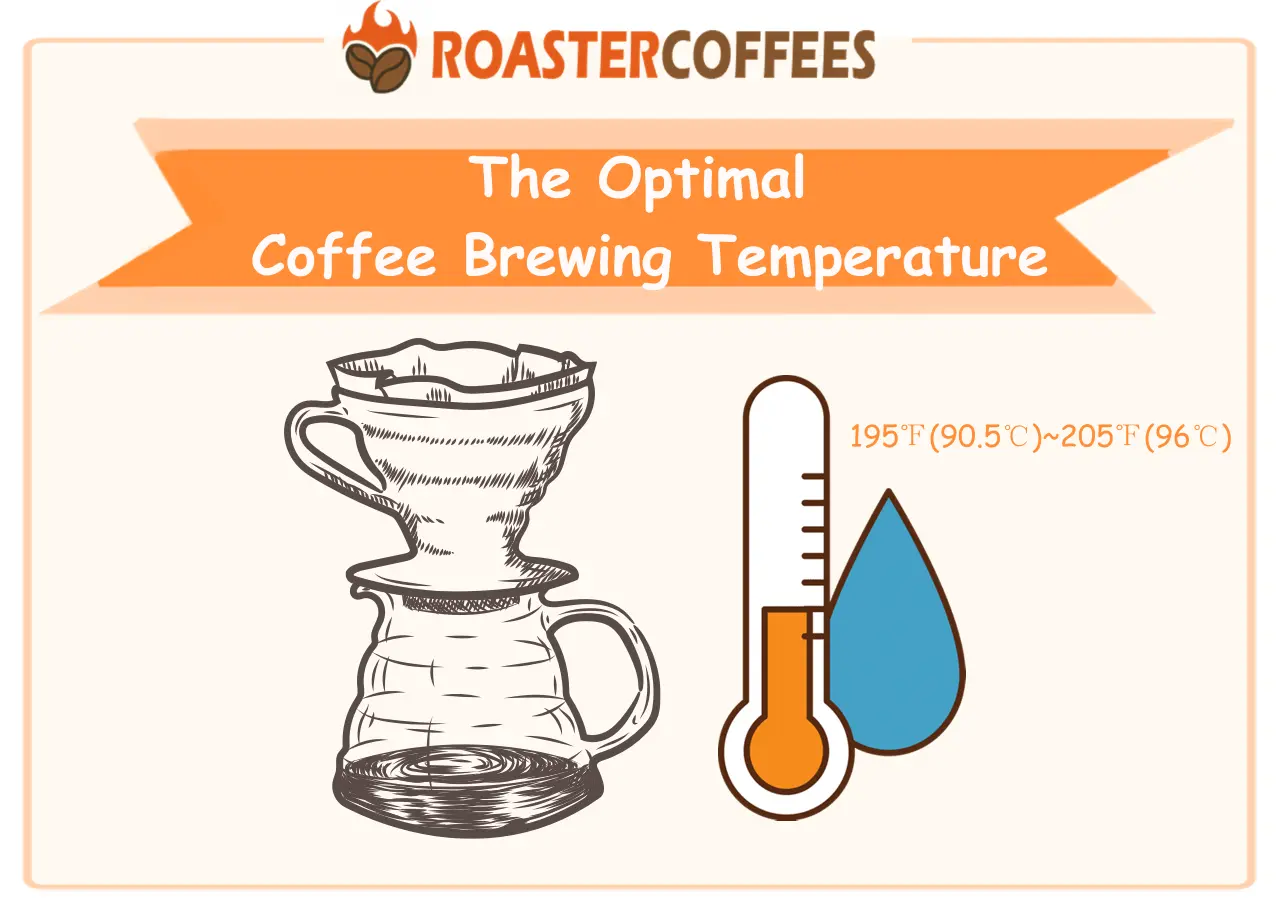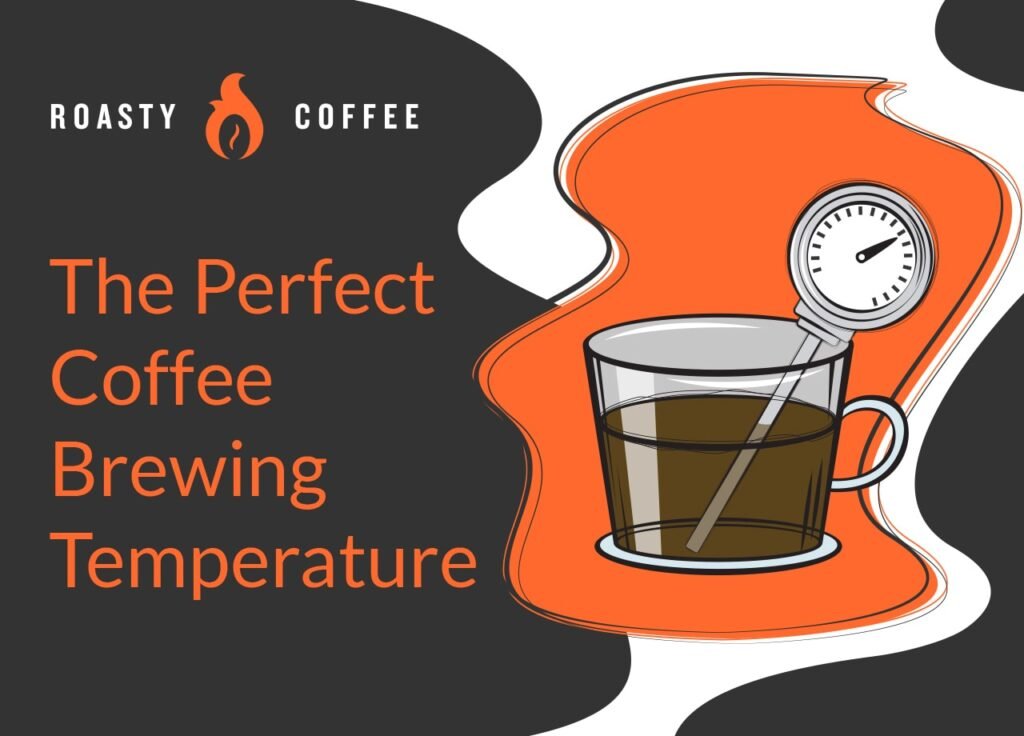Imagine waking up in the morning to the heavenly aroma of freshly brewed coffee. As you eagerly make your way to the kitchen, your mind is filled with questions about the perfect brewing time. Is it a matter of seconds or minutes? In this article, we will explore the fascinating world of coffee brewing and uncover the optimal brewing time for that perfect cup of joe. So, grab your favorite mug, sit back, and let’s unravel the mysteries of brewing the best coffee possible.

Factors Affecting Brewing Time
When it comes to brewing a perfect cup of coffee, there are several factors that come into play. These factors can greatly impact the flavor, strength, and overall quality of your brew. Understanding these factors and how they affect brewing time is key to achieving that optimal cup of coffee you desire. Let’s delve into the four main factors that play a crucial role in determining brewing time: coffee grind size, coffee-to-water ratio, water temperature, and brewing method.
How Coffee Grind Size Impacts Brewing Time
One of the first factors to consider when brewing coffee is the grind size. The grind size refers to how finely or coarsely the coffee beans are ground. Different grind sizes require different brewing times to extract the desired flavors from the coffee grounds.
Coarse grind
A coarse grind, with larger coffee particles, generally requires a longer brewing time. This is because the water takes longer to penetrate the larger particles and extract the flavors. Coarse grinds are commonly used in brewing methods like the French press, where a longer brewing time allows for a full-bodied and robust cup of coffee.
Medium grind
A medium grind falls somewhere in between a coarse and fine grind. It is often the go-to grind size for popular brewing methods like pour-over and drip coffee makers. Medium grinds offer a balanced brewing time that enhances the flavors without overdoing it. This grind size is versatile and can be adjusted to suit personal preferences.
Fine grind
A fine grind consists of smaller coffee particles, often resembling sand or powdered sugar. Fine grinds tend to have a faster brewing time as the smaller particles are easily penetrated by water. This grind size is commonly used for espresso machines and requires a shorter brewing time to extract the intense and concentrated flavors.
The Role of Coffee-to-Water Ratio
Another crucial factor that determines brewing time is the coffee-to-water ratio. This ratio refers to the amount of coffee used in proportion to the amount of water. Finding the right balance between coffee and water is essential in achieving the desired strength and flavor in your cup of coffee.
Stronger and bolder coffee flavors
Using a higher ratio of coffee to water will result in a stronger and bolder cup of coffee. This means that more coffee grounds are used per unit of water, allowing for a more concentrated extraction of flavors. With a higher coffee-to-water ratio, the brewing time may need to be adjusted accordingly to ensure that the flavors are properly extracted without becoming overpowering.
Weaker and milder coffee flavors
A lower coffee-to-water ratio will yield a weaker and milder cup of coffee. This requires a shorter brewing time to avoid over-extracting the limited amount of coffee grounds. It’s important to note that adjusting the coffee-to-water ratio can significantly impact the overall strength of your brew, so experimentation and finding the right balance are key.
The Significance of Water Temperature
Water temperature is another key factor that affects brewing time and ultimately the flavor of your coffee. Brewing coffee at the optimal temperature ensures that the flavors are extracted efficiently without any undesirable effects.
Temperature too low
If the water temperature is too low, the coffee grounds will not extract properly, resulting in a weak and underwhelming cup of coffee. The brewing time will need to be extended to compensate for the lower temperature, but this may still not yield the desired flavors. It’s important to use water that is within the optimal temperature range to avoid this issue.
Temperature too high
On the other hand, if the water temperature is too high, it can lead to over-extraction of the coffee grounds, resulting in a bitter and unpleasant taste. In this case, a shorter brewing time may be necessary to prevent the release of excessive bitterness. It’s crucial to find the balance and brew at the ideal water temperature to avoid these extremes.
Optimal temperature range
The optimal water temperature for brewing coffee is typically between 195°F (90°C) and 205°F (96°C). This range allows for efficient extraction of flavors while minimizing the risk of bitterness. It’s recommended to invest in a reliable thermometer to ensure that the water temperature is within this range for optimal brewing results.

Different Brewing Methods and Their Brewing Times
The brewing method you choose can greatly influence the brewing time and ultimately the flavor profile of your coffee. Let’s explore some popular brewing methods and their respective brewing times.
French press
The French press method typically requires a brewing time of around 4 to 5 minutes. This longer brewing time allows for a full immersion of the coffee grounds in water, resulting in a rich and bold cup of coffee.
Pour-over
Pour-over brewing methods, such as the V60 or Chemex, often require a shorter brewing time ranging from 2 to 4 minutes. The water is poured in a controlled manner over the coffee grounds, allowing for a precise extraction that highlights the coffee’s unique flavors.
Espresso machine
Espresso machines have significantly shorter brewing times, typically around 25 to 30 seconds. The high pressure used in this method allows for a quick extraction of intense flavors, resulting in a concentrated shot of espresso.
Drip coffee maker
Drip coffee makers are known for their convenience and consistent results. The brewing time for drip coffee makers can vary but usually falls within the range of 5 to 7 minutes. This method allows for a proper extraction of flavors while maintaining a balanced strength.
Cold brew
Cold brew is a unique brewing method that requires a significantly longer brewing time. The coffee grounds are steeped in cold water for an extended period, often ranging from 12 to 24 hours. This slow extraction process results in a smooth and less acidic cup of coffee.
The Science Behind the Optimal Brewing Time
The optimal brewing time isn’t just a matter of preference but is actually grounded in scientific principles. Understanding the extraction process and balancing flavor extraction is key to achieving the perfect brew.
Extraction of coffee compounds
During the brewing process, water extracts essential compounds from the coffee grounds, such as acids, sugars, oils, and aromatic compounds. The length of brewing time determines the extent to which these compounds are released and contribute to the overall flavor profile of the coffee.
Balancing flavor extraction
The optimal brewing time allows for the extraction of desired flavors while minimizing the extraction of undesirable compounds. Over-extraction can lead to bitter or astringent flavors, while under-extraction can result in sour or weak flavors. Finding the right balance ensures a harmonious and well-rounded cup of coffee.
Achieving proper strength and body
Brewing time also determines the strength and body of the coffee. A shorter brewing time may result in a lighter-bodied brew, while a longer brewing time can yield a fuller-bodied and more robust cup. The desired strength and body can vary depending on personal preference and the intended use of the coffee.

Determining the Optimal Brewing Time
Determining the optimal brewing time can be a journey of experimentation and personal preference. While there are general guidelines to follow, the ideal brewing time may vary depending on factors such as grind size, coffee-to-water ratio, and personal taste preferences.
Experimentation and personal preference
The best way to find your optimal brewing time is through experimentation. Start with the recommended brewing time for your chosen brewing method and make incremental adjustments based on your taste preferences. Take notes along the way to track the changes in flavor and strength.
Recommended brewing time guidelines
As a starting point, here are some general brewing time guidelines for popular brewing methods:
- French press: 4 to 5 minutes
- Pour-over: 2 to 4 minutes
- Espresso machine: 25 to 30 seconds
- Drip coffee maker: 5 to 7 minutes
- Cold brew: 12 to 24 hours
These are rough estimates, and it’s important to note that the brewing time may need to be adjusted based on variables such as grind size, coffee-to-water ratio, and personal taste preferences.
Adjusting brewing time for desired strength
If you prefer a stronger cup of coffee, you can extend the brewing time slightly to extract more flavors from the coffee grounds. Conversely, if you prefer a milder cup, you can reduce the brewing time to achieve a lighter extraction. Don’t be afraid to experiment and customize the brewing time to suit your taste preferences.
How Over- or Under-brewing Affects Coffee Taste
Over- or under-brewing can have a significant impact on the taste of your coffee. It’s important to understand the potential consequences of these extremes to avoid any undesirable flavors.
Over-extraction and bitter taste
Over-extraction occurs when the coffee grounds are in contact with water for too long, leading to the release of excessive bitter compounds. This can result in a bitter and unpleasant taste that masks the coffee’s natural flavors. To avoid over-extraction, ensure that you don’t exceed the recommended brewing time and adjust other factors such as grind size and coffee-to-water ratio accordingly.
Under-extraction and sour taste
Under-extraction happens when the coffee grounds are not in contact with water for a sufficient amount of time, leading to an underwhelming and sour taste. The coffee may lack depth and complexity, resulting in a weaker cup. To prevent under-extraction, make sure to brew your coffee for the recommended time or slightly longer, depending on your taste preferences.
Strategies for Achieving Optimal Brewing Time
To consistently achieve the optimal brewing time, there are several strategies you can implement. These strategies focus on precision, accuracy, and understanding the specific requirements of your chosen brewing method.
Investing in a quality grinder
A quality grinder plays a significant role in achieving the optimal brewing time. Consistent grind size ensures even extraction and allows for a uniform brewing process. Invest in a burr grinder, as it provides better control over grind size compared to blade grinders.
Measuring coffee and water accurately
Accurate measurement of coffee and water is crucial for achieving the desired coffee-to-water ratio. Use a kitchen scale to measure the coffee and water precisely. This ensures consistency and allows for accurate adjustments to brewing time based on the desired strength and flavor.
Using a thermometer
Using a thermometer to monitor water temperature is recommended to brew coffee within the optimal temperature range. This ensures proper extraction and avoids the pitfalls of over- or under-brewing due to incorrect water temperature.
Understanding brewing times for different methods
Each brewing method has its own ideal brewing time, as discussed earlier. Understanding these specific brewing times for different methods will allow you to make informed decisions and adjust accordingly. Take the time to research and familiarize yourself with the recommended brewing times for your preferred brewing method.
Conclusion
Finding the optimal brewing time for a cup of coffee is a journey of exploration and personal preference. Factors such as coffee grind size, coffee-to-water ratio, water temperature, and brewing method all play significant roles in determining the ideal brewing time. Understanding the science behind coffee extraction and flavor balance is key to achieving the perfect cup of coffee. Remember to experiment, take notes, and adjust variables to suit your taste preferences. With patience and practice, you’ll be able to brew a consistently delicious cup of coffee that satisfies your unique palate. So go ahead, explore the realm of coffee brewing and discover your own optimal brewing time!


